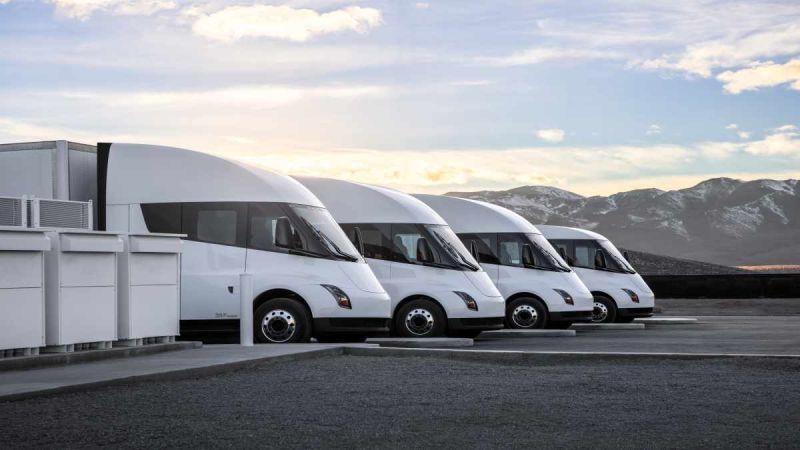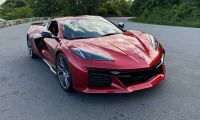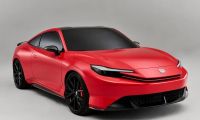Tesla Semi Reveal Shows FSD
The Tesla Semi has just started to go into delivery mode, with PepsiCo taking first deliveries. We even saw a picture of the Tesla Semi battery, which showed several battery modules. Still, much about the Tesla Semi is unknown.
One thing that we do know is that when you take a closer look at the Tesla Semi vehicles delivered to Frito-Lay, there is an FSD computer onboard that isn't active yet. There are some people who speculate that this FSD software is version 11. Tesla Semi vehicles aren't autonomous yet though and it will likely be some time before this happens.
PepsiCo ordered 100 Tesla Semi vehicles and has received 36 so far. 15 of these have been assigned to the Frito-Lay factory in Modesto, California. There was even a single day dedicated to showing off these trucks.
This open day to show off the Tesla Semi was valuable because it gave people a chance to find out some things that Tesla wasn't telling the public. We know there is a trimotor configuration on the Semi with some interesting details. The Tesla Semi has about 3 times the power of a diesel semi, which equals about 1,000 horsepower.
Tesla Semi Drive Train, Batteries, and Charging
Knowing that the Tesla Semi has a trimotor setup, we could have deduced that it has horsepower close to the Model S Plaid. The Tesla Semi uses a modified Model S Plaid drivetrain to drive the two rear axles. The rearmost motor acts as the highway drive unit, which takes over when the Tesla Semi reaches a steady speed. The other two front motors take care of torque and acceleration.
The batteries of the Tesla Semi are not like the Model S batteries, however. The Tesla Semi revealed showed a modular design for the battery, with each module acting independently. This means each module has a 1,000 volt output, and they are connected in parallel. There are nine modules installed, and Tesla can be flexible here. They can install more for an even longer range semi, or they can cut back for a cheaper version of the semi and use six modules.
I really like this modular battery design. I think Tesla could start to apply this to other vehicles in order to make even cheaper vehicles for less range for those who don't need to drive more than, let's say, 80 miles in a day.
The charging of the Tesla Semi is unique and has a plug that is incompatible with any other Tesla vehicle. There is a huge plug that allows a 750 kW charge, and this is enough to charge the Tesla Semi from 0 to about 70% in half an hour for about 400 miles of range. A full charge takes about 90 minutes.
There are some menus on the truck revealing some details - and that is the Tesla Semi features an FSD computer. It also runs v11 software, which is quite interesting since this FSD version has not been deployed to Tesla's other vehicle models. There is no Autopilot in the settings for the Tesla Semi yet, which means the software is dormant and can't be run.
With the high-quality images from the external camera on the Tesla Semi, we can deduce that it has the HW sensor suite. This seems right since the Cybertruck will also have improved sensors. Another interesting thing is that the Tesla Semi doesn't have an auto setting for wipers. Maybe Tesla is realizing that this setting is flawed, as other Tesla Models have issues with this.
All in all, the Tesla Semi is a big step-up for Tesla, and I'm looking forward to seeing more about it. What do you think of the Tesla Semi?
* For more information, see this article from Auto Evolution
Leave your comments below, share the article with friends and tweet it out to your followers.
Jeremy Johnson is a Tesla investor and supporter. He first invested in Tesla in 2017 after years of following Elon Musk and admiring his work ethic and intelligence. Since then, he's become a Tesla bull, covering anything about Tesla he can find, while also dabbling in other electric vehicle companies. Jeremy covers Tesla developments at Torque News. You can follow him on Twitter or LinkedIn to stay in touch and follow his Tesla news coverage on Torque News.











